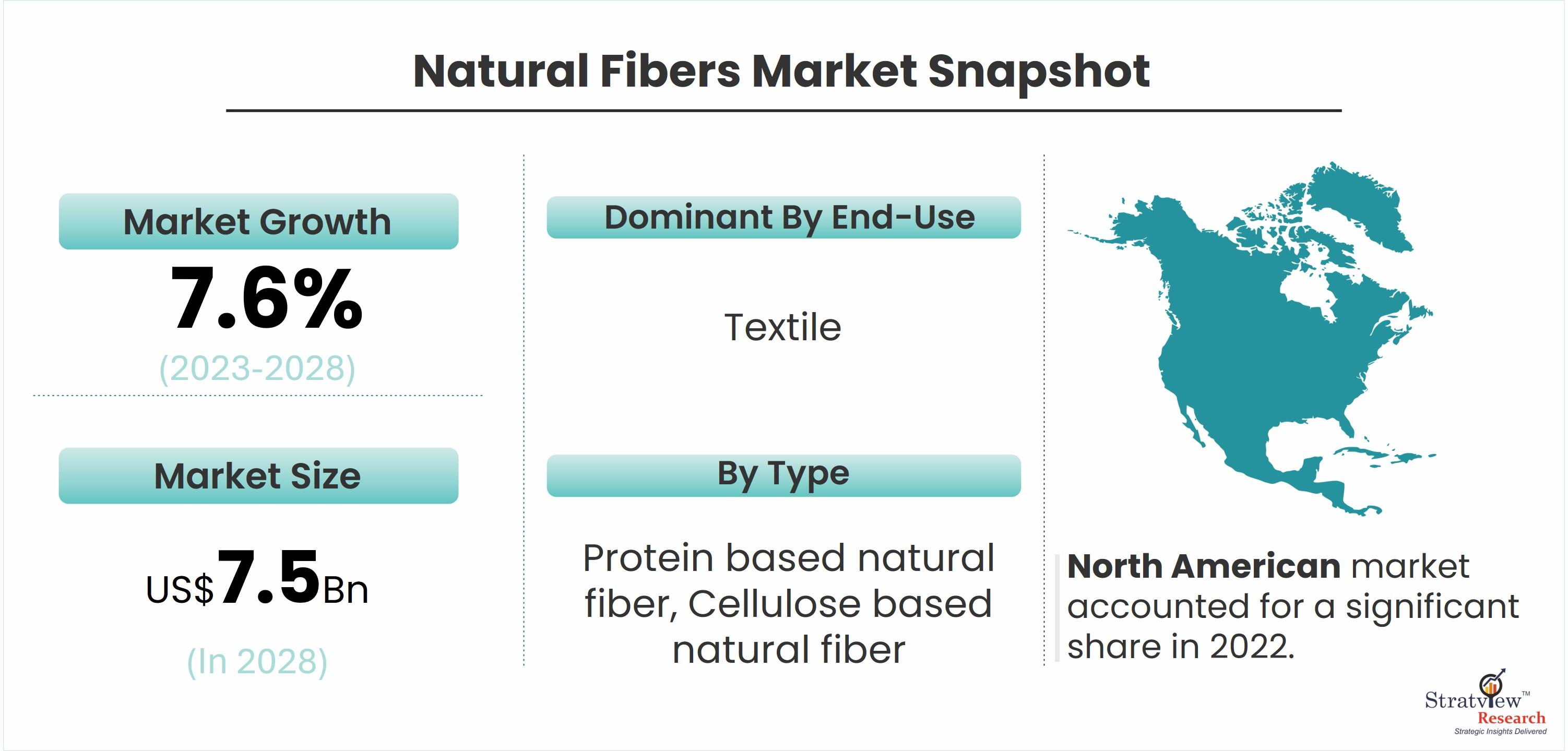According to Stratview Research, the natural fibers market was estimated at USD 4.8 billion in 2022 and is likely to grow at a CAGR of 7.6% during 2023-2028 to reach USD 7.5 billion in 2028.
In an era marked by growing environmental consciousness and a shift towards sustainability, natural fibers have emerged as a key player in the global textile industry. From cotton and wool to hemp and bamboo, natural fibers offer a plethora of benefits, ranging from biodegradability and renewability to superior comfort and performance. In this article, we delve into the burgeoning market trends and opportunities driving the rise of natural fibers.
Embracing Sustainability in Textiles
The textile industry has long been associated with environmental concerns, including pollution, resource depletion, and labor exploitation. However, as consumers become more aware of the environmental and social impacts of their purchasing decisions, there has been a significant shift towards sustainable alternatives. Natural fibers, derived from plants, animals, and minerals, are gaining traction as eco-friendly alternatives to synthetic materials derived from petrochemicals.
Market Trends Driving Growth
Several key trends are shaping the market landscape for natural fibers:
Consumer Demand for Sustainable Products: Today's consumers are increasingly seeking out products that align with their values, including sustainability and ethical production practices. As awareness grows about the environmental footprint of synthetic fibers, there is a rising demand for textiles made from natural, renewable sources.
Regulatory Support for Sustainability: Governments and regulatory bodies worldwide are enacting policies to promote sustainability and reduce carbon emissions in various industries, including textiles. This regulatory support, coupled with incentives for eco-friendly practices, is encouraging manufacturers to invest in natural fiber production.
Innovations in Fiber Technology: Advancements in agricultural practices, processing techniques, and fiber engineering are expanding the range of natural fibers available in the market. From high-performance bamboo fabrics to durable hemp textiles, innovative solutions are driving the versatility and appeal of natural fibers across diverse applications.
Fashion Industry Adoption: The fashion industry plays a pivotal role in driving consumer trends and shaping market preferences. With an increasing number of fashion brands committing to sustainability goals, there is a growing demand for natural fibers in the apparel and accessories sector. From luxury fashion houses to fast-fashion retailers, brands are incorporating natural fibers into their collections to meet consumer expectations for eco-friendly fashion.
Opportunities for Growth and Innovation
The rise of natural fibers presents numerous opportunities for stakeholders across the textile value chain:
Investment in R&D: Research and development efforts aimed at improving the quality, performance, and sustainability of natural fibers can unlock new market opportunities. Innovations in fiber processing, dyeing techniques, and fabric finishes can enhance the appeal of natural fiber textiles in terms of aesthetics, durability, and functionality.
Supply Chain Collaboration: Collaboration among farmers, processors, manufacturers, and retailers is essential for ensuring a sustainable and transparent supply chain for natural fibers. By working together to optimize production practices, reduce waste, and improve traceability, stakeholders can create value-added products that resonate with eco-conscious consumers.
Market Diversification: Natural fibers offer a diverse range of properties and applications, ranging from apparel and home textiles to automotive and industrial products. Exploring niche markets and expanding the use of natural fibers in non-traditional applications can open up new avenues for growth and differentiation.
Conclusion
The rise of natural fibers signifies a fundamental shift towards a more sustainable and environmentally responsible future for the textile industry. As consumer awareness continues to drive demand for eco-friendly products, natural fibers are poised to play an increasingly prominent role in shaping the market landscape. By embracing innovation, collaboration, and responsible sourcing practices, industry stakeholders can capitalize on the growing momentum towards sustainability and unlock the full potential of natural fibers in the global marketplace.
